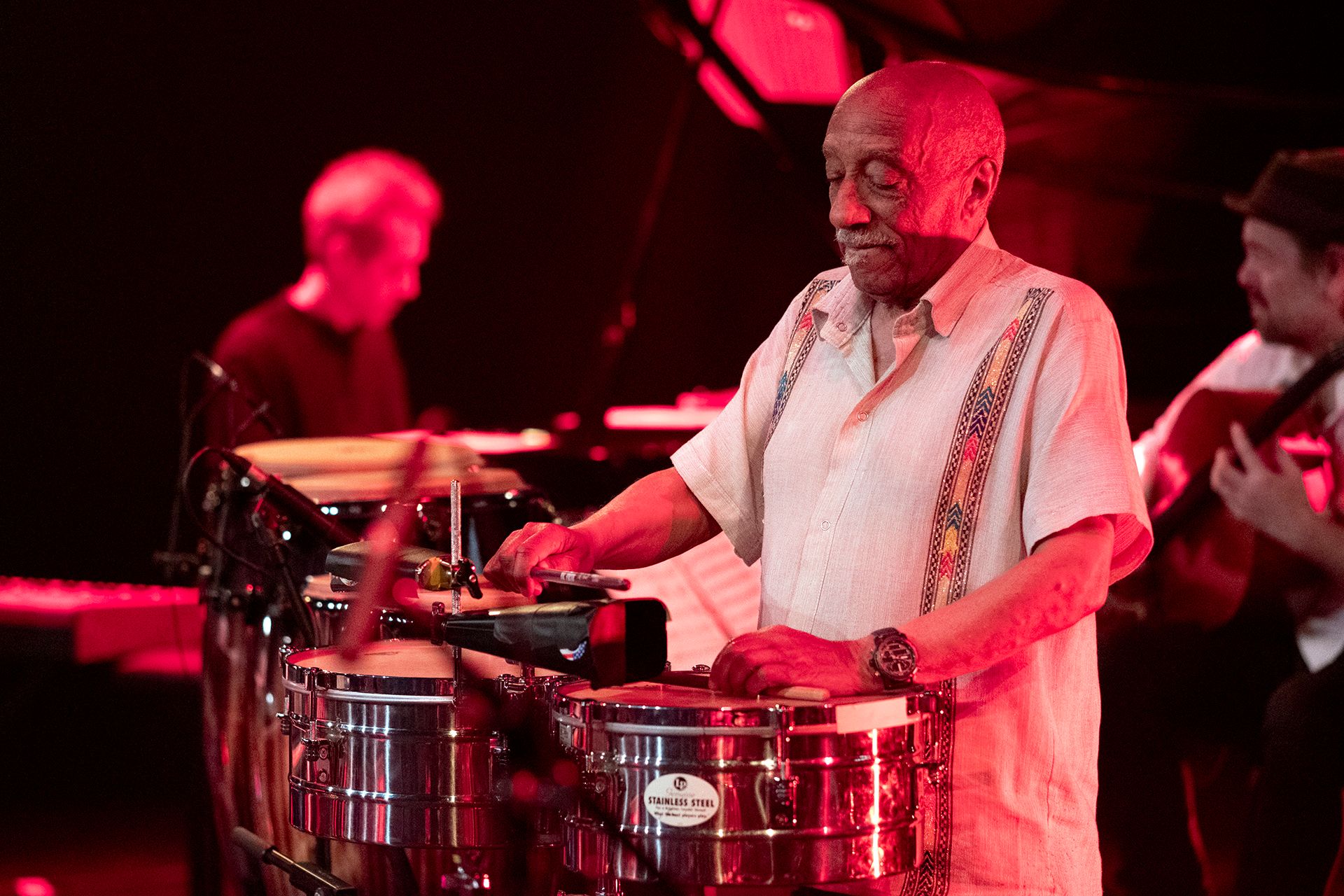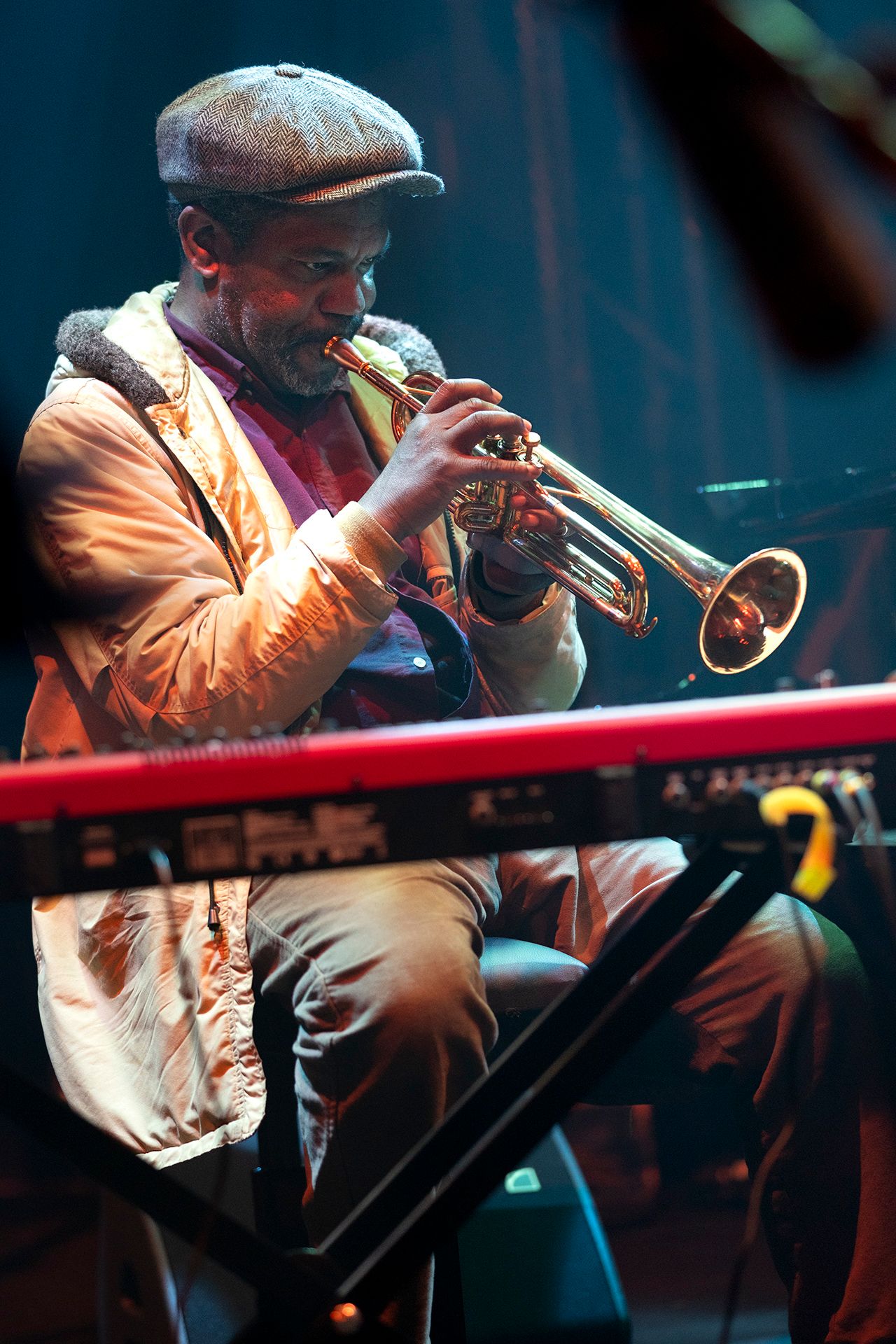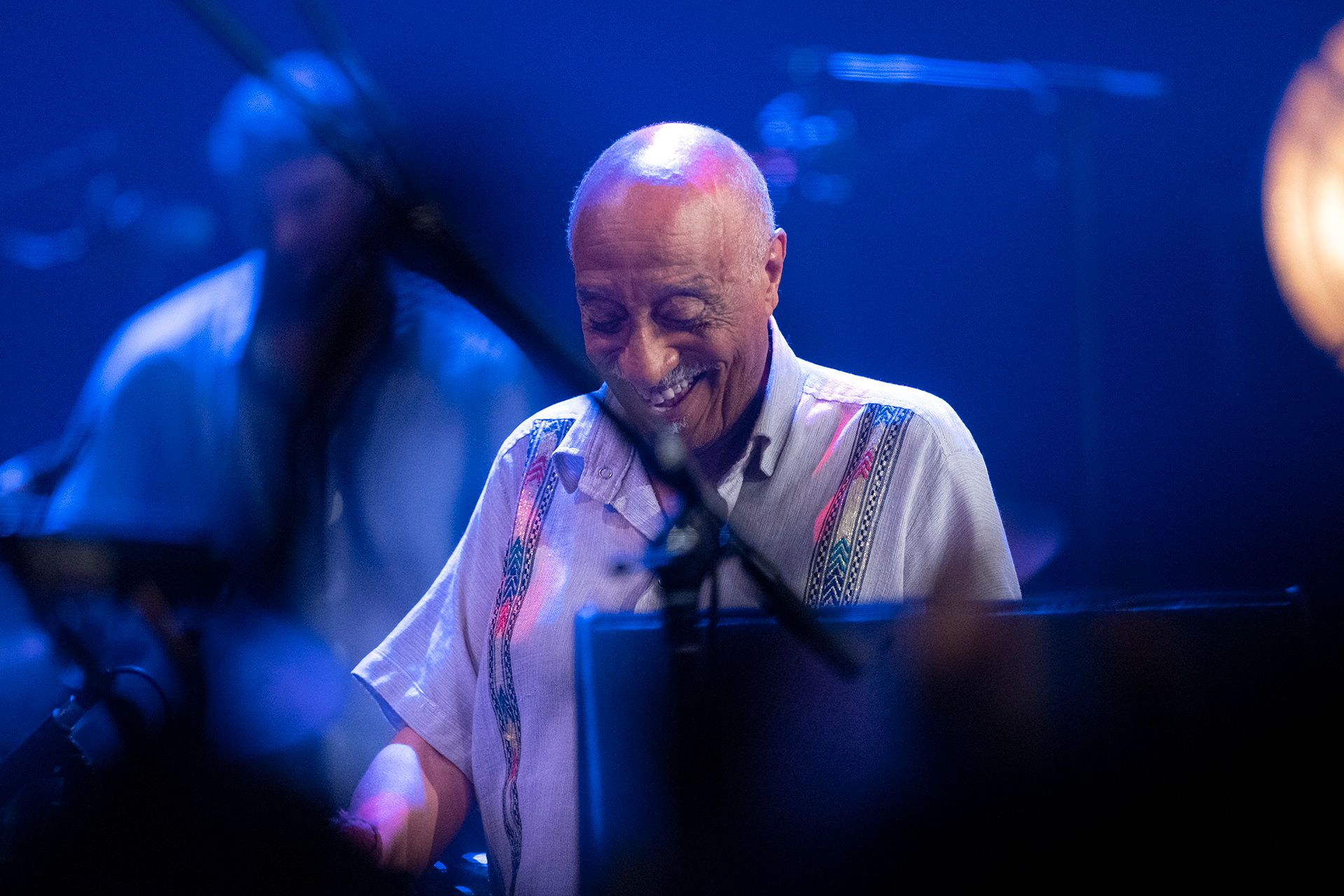Mulatu Astatke
After an initial stay in London, where he was supposed to become an engineer, Mulatu Astatke moved to Boston and New York in the early 1960s, where he studied vibraphone and congas. He then produced two albums in 1966, which he called Afro-Latin Soul, with singles produced in Ethiopia in parallel. A few years later, two albums introduced Ethio-jazz, music that would become his trademark. The first album, co-produced by Ethiopian Airlines, was offered to first class passengers.
It wasn't until the late 1990s, however, that the series of French CD compilations Les Ethiopiques introduced music lovers, including a certain Jim Jarmusch, to the delights of Ethio-jazz.
---
We find Mulatu Astatke performing his Ethio-jazz at the Cully Jazz festival with his band featuring James Arben on sax, Byron Wallen on trumpet, Danny Keane on cello, Nicholas David on piano, John Edwards on double bass, Richard Olatunde Baker on percussion and Jon Scott on drums.








